Cellini Prince
replica watches first appeared in 1928, once in late 1940s suspended for some reason. Prince
uk replica watches with rectangular shape its avant-garde and good timing performance to win the good reputation and is regarded as the elegant and outstanding representative. Prince
replica watches have 5 different styles: platinum black leather watchband and watchcase collocation black silver dial, Golden Brown Leather Watchband and watchcase collocation Gold Dial, Black Leather Watchband and watchcase platinum collocation godron silver dial, Black Leather Watchband and watchcase platinum collocation Diamond Dial, Eternal Rose Gold case collocation Black Leather Watchband and decorated with "Rayon Flamme De La Gloire" radiation pattern of the black dial.
Most of the photos in this tour were taken from the out of print 4 volume set "Pyramidology" by Adam Rutherford (released between 1957- 1972). Adam Rutherford was one of the greatest Pyramidologists that ever lived. These pages may take some time to load but I think it is worth the wait. There are 40 photos on 6 pages.
Before we enter the interior of the Great Pyramid, let us look at some EXTERIOR views.
| (1) Arial View of the Great Pyramid |
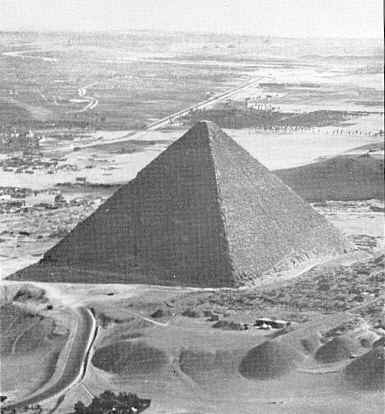 |
The Great Pyramid of Giza stands on the northern edge of the Giza Plateau, located about 10 miles west of Cairo. The Greeks listed the Great Pyramid of Giza as the first wonder of the world and it is the only one of the seven still remaining to this day.
| (2) Northern Part of the EAST side |
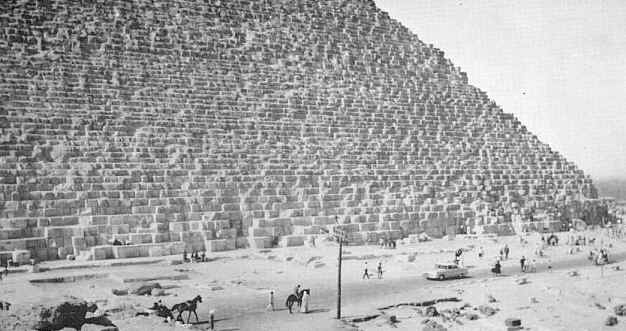 |
| (3) Southern Part of the EAST side with other Giza pyramids in the background |
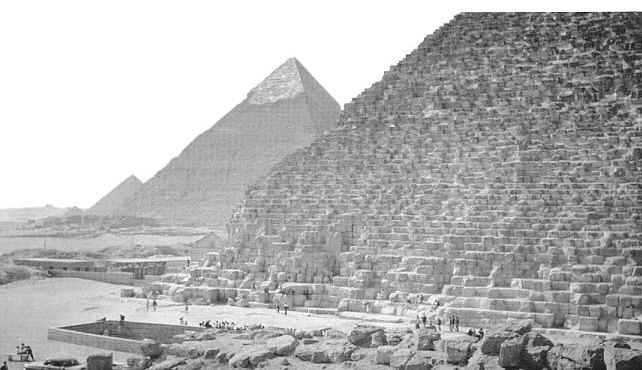 |
Next to the Great Pyramid stands 2 additional large pyramids. The Great Pyramid is thought, by traditional scholars, to have been erected around 2600 BC during the reign of Khufu (whom the Greeks called Cheops) of the 4th Egyptian Dynasty. The slightly smaller one is attributed to Cheop's son and successor, Kephren. The other, still smaller, is attributed to Kephren’s successor, the grandson of Cheops, Mykerionos. Recent geological studies indicate that the Great Pyramid and the Sphinx may be at least 10,000 years older than traditional scholars have thought.
| (4) North-East Corner. Adam Rutherford is seated on a camel. |
 |
| (5) Looking down from the top of the S.W. Corner. |
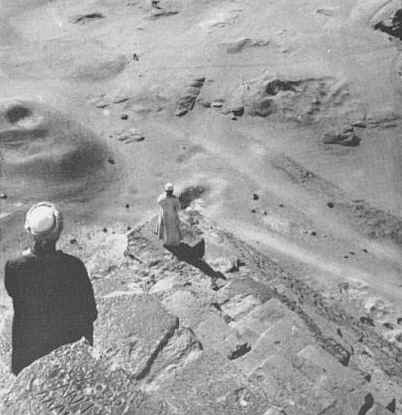 |
| (6) Central part of the Summit (Top) of the Great Pyramid. |
 |
| (7) Tourists and guides climbing the Great Pyramid in the early part of the 20th century. |
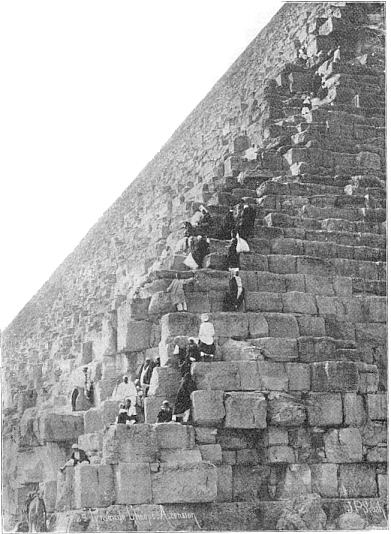 |
|






